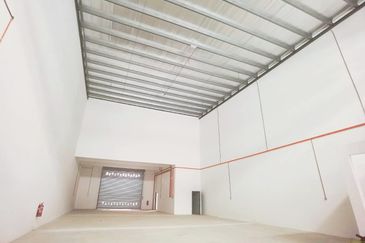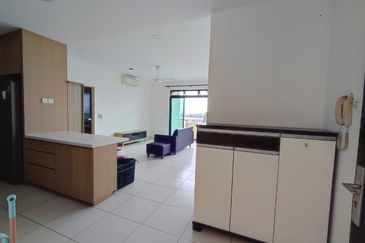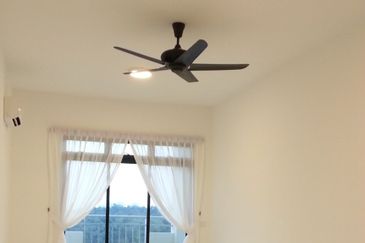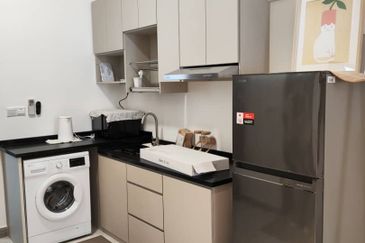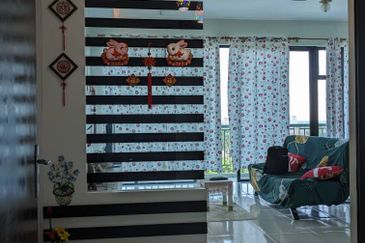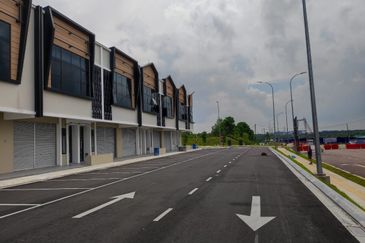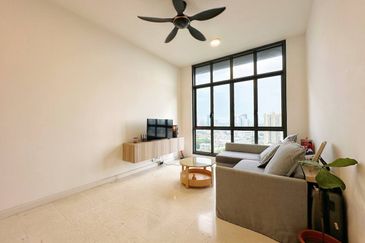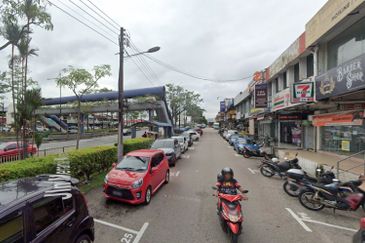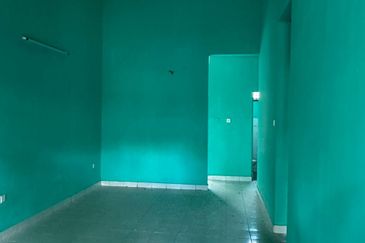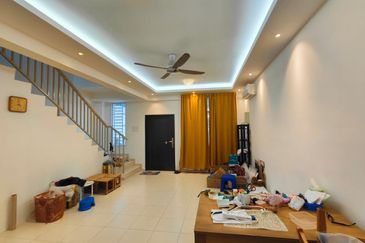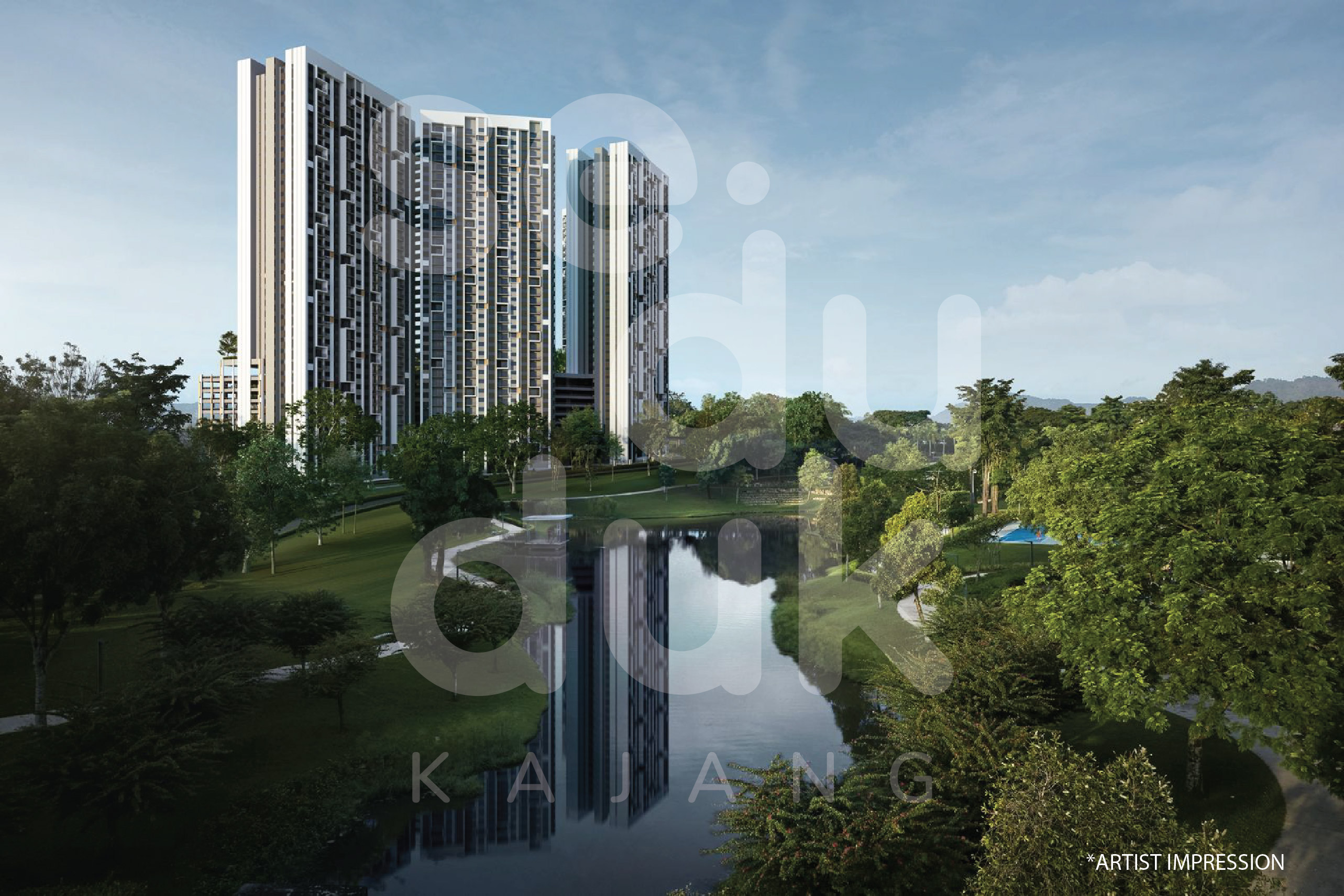SITTING at the top of Emerald Hill Road, in an exclusive neighbourhood of conservation terraced houses — many of which are owned by some of the most illustrious families in Singapore — is a sleek, new mixed residential project. Called The Residences at Emerald Hill, it is the maiden residential project of Singapore Exchange-listed property investment and development group Lafe Corp.
The Residences at Emerald Hill comprises 29 units in three elevated 12-storey blocks, where every unit enjoys direct views of the Istana grounds and Marina Bay. The units are three- and four-bedroom apartments measuring 1,567 to 2,282 sq ft. There are also four strata townhouses, each with private basement parking for two cars, a home lift, five bedrooms and a private lap pool. Foreigners are eligible to purchase these strata townhouses, which are priced at $19 million each.
The Residences at Emerald Hill obtained Temporary Occupation Permit (TOP) in June 2011, but the Bermuda-registered company spent an additional US$1.2 million to enhance the project last year, according to Lafe Corp in its FY2012 results statement. The project was officially launched over the weekend of Feb 23 and 24.
The market had initially indicated that the pricing would range from $2,800 to $3,200 psf. However, Lafe Corp is releasing an initial phase of 12 units at average prices of $2,500 to $2,600 psf, after a developer's and stamp duty discount.
With the latest series of government cooling measures, which came into effect on Jan 12 and is considered the harshest so far, and the increase in property tax rates for high-end residential properties, especially for investment properties not occupied by the owners, more developers can be expected to offer better discounts to entice buyers back to the market.
The new property tax rates, which are a form of "wealth tax" on high-end homes, are to be introduced over the next two years, and is expected to dampen demand even further in this segment. Previously, residential properties not occupied by their owners were subject to a flat 10% tax rate. There will now be progressive tax rates of 12% to 20% for those investment properties. The current concession, which provides property tax refunds on vacant properties, will be removed from Jan 1, 2014.
In his Budget 2013 speech, Minister of Finance Tharman Shanmugaratnam said, "This is fair. The property tax is a wealth tax and applied irrespective of whether [the property is] lived in, vacant or rented out. Those who live in the most expensive homes should pay more property taxes than others."
The latest round of government measures has affected all categories of buyers, except first-timers. While foreigners are subject to a 15% additional buyer's stamp duty (ABSD), permanent residents (PRs) now have to pay ABSD of 5% on their first property, and 10% on their second and third respectively. Singaporeans buying their second property are hit by a 7% ABSD, and 10% on subsequent purchases. The minimum cash down payment for second and subsequent purchases has also been raised to 25%, and borrowing limits have been reduced to 50% and 40% for those taking a second or third mortgage respectively. Corporate entities, like foreign individuals, are also subject to a higher ABSD of 15%, with the borrowing limit reduced even further to just 20% LTV (loan-to-value ratio).
Running out of time
Besides being buffeted by policy headwinds, the clock is also ticking for Lafe Corp's The Residences at Emerald Hill under the qualifying certificate (QC) requirements of the Residential Property Act. Like other SGX-listed companies deemed to have foreign shareholders and directors, Lafe Corp had to obtain a QC when it purchased the development site on Emerald Hill Road, and was given up to seven years to sell the units in the project. The Residences at Emerald Hill is a redevelopment of the former Emerald Lodge site purchased en bloc in January 2006 for $45.2 million, or $803 psf per plot ratio (ppr).
The project has to be completed within five years, and all units sold within two years of obtaining TOP. Any extension of the sale period beyond seven years will be subject to a penalty of 8%, 16% and 24% of the land acquisition cost in the first, second and third years of extension respectively. The penalty to be paid for each year is pro-rated based on the proportion of unsold units, as QC holders are not allowed to hold unsold units as investment property.
Last July, Lafe Corp announced that the Singapore Land Authority had not granted its application to rent unsold units in The Residences at Emerald Hill. The seven-year QC period for The Residences at Emerald Hill ends in June.
Another project in the Cairnhill area that has caught the attention of market observers is the 241-unit Hilltops. The project is by Simon Cheong's SC Global Developments, which has a reputation for setting new benchmarks in quality, luxury and pricing. As at end-January, only 46 units at Hilltops had been sold, according to URA new home sales, which means 195 units are still available.
SC Global had paid $382 million for the Hilltops site — an amalgamation of the former Hilltops Apartments, which it purchased en bloc for $294 million in May 2006, and 16 adjacent terraced houses, which it purchased for $88 million. The total purchase amount of $382 million works out to $880 psf ppr.
When SC Global released Hilltops units for sale in late 2007, at the height of the last property boom, prices ranged from $3,500 to $4,000 psf. Then, in mid-2009, former Parkway Holdings managing director, Tony Tan, and a group of investors successfully purchased 18 units for $48.2 million ($2,560 psf) in a sub-sale from a Hong Kong investor.
The most recent transaction at Hilltops, based on caveats lodged with URA Realis, was that of a 1,249 sq ft two-bedroom unit, which was sold for $3.71 million ($2,972 psf) in December. According to property agents, indicative prices for selected two- and three-bedroom apartments at Hilltops are from $3,200 to $3,300 psf; and the four- and five-bedroom apartments, measuring 2,390 to 2,874 sq ft, are generally priced at $4,000 to $4,300 psf. There are also four penthouses, measuring 6,500 to 12,560 sq ft. Each penthouse is a duplex with four bedrooms, a family room and private swimming pool.
In early December, Cheong offered to take SGX-listed SC Global private for $745 million, or $1.80 a share. The counter was delisted at end-January. Hilltops obtained its TOP in April 2011. With SC Global de-listed, market speculation is whether the developer will be subject to a penalty for an extension of the sale period of Hilltops.
SC Global's crown jewel is the 66-unit ultra luxury condo The Marq on Paterson Hill, which obtained its TOP in January 2011. Midway through the privatisation exercise in January, SC Global announced that it needed to pay $5.5 million for a six-month extension to sell the remaining units at The Marq beyond the QC period. As at end-January, 34 of the 66 units remained unsold. The Marq achieved a record price of $6,840 psf in November 2011, when a 3,003 sq ft unit on the 20th floor was sold for $20.54 million. Most recently, a unit on the eighth floor was sold for $15.2 million ($4,920 psf) last September, according to the latest caveat lodged with URA Realis.
Impact on rental rates, demand for high-end properties
With the rise in property tax rates for residential investment properties, the most affected will be luxury property that foreigners had bought as a holiday or second home. "If they leave their units vacant, which many do, they will also be taxed under this new regime," says Alan Cheong, head of research at Savills Singapore.
While Alan sees the latest policy on tax rates as having little impact on rental rates, the progressive tax rates on top of personal taxes make owning high-end residential real estate in Singapore less attractive as an investment proposition, he observes. "This will encourage more [investors] to take their capital overseas," he adds.
The graduated property tax on luxury properties will hurt not only high-net-worth investors but also put pressure on the holding cost of investment properties held by developers and corporate entities, notes Petra Blazkova, head of research at CBRE.
Some individual investors may also decide to offload their units to realise capital gains instead of holding on to vacant units, says Lee Lay Keng, DTZ's associate director of research. Meanwhile, those who do not want to sell their units will now have to be prepared to be more open to rental negotiations as competition for tenants increase, especially with more supply in the pipeline. Lee points out, "The rental pressure is likely to be greater for larger apartments in the prime areas, where the rental quantum is higher, and investors are now going to be subject to higher property taxes."
Grace Ng, deputy managing director of Colliers International, agrees. "Rental yields in the high-end residential market are hovering at 1% to 2% and will see further compression, especially the freehold luxury condos," she observes. "Most of them already have problems renting out the units, as tenants are picky and housing budgets have been cut."
Jones Lang LaSalle (JLL) does not expect the revised tax rates to have a significant impact on the residential market. "Some investors may choose mass-market homes over the high-end segment as a result of the potential tax savings," says Chua Yang Liang, JLL's head of research for Southeast Asia "But we do not think there will be any general shift in demand."
The resale market is likely to get even more crowded, with more potential sellers entering the fray. There will be more competition not only from individual owners with units to rent or sell in the prime districts but also from developers with unsold stock in complete projects as well as private funds that have made bulk purchases of units and are looking to lease or resell them individually.
Thus, while JLL's Chua expects prices to hold steady across the high-end segment, he reckons the top end will continue to face "marginal downside risk associated with the recent property-market policy".
Sales in the top end of the condo market had already slowed in 2012, following the introduction of a 10% ABSD on foreigners buying residential property, which came into effect on Dec 8, 2011. PRs and Singaporeans were less severely affected, as they were subject to an ABSD of only 3% on their second and third residential property purchases respectively. As such, last year saw record new-home sales of 22,197 units, boosted mainly by sales of mass-market projects, which are dominated by local buyers.
Luxury condo transactions averaged 10 units a quarter last year, compared with 13 a quarter in 2011, points out CBRE in a research report on Feb 21. Capital values of luxury property edged up slightly to $2,800 psf in 2012, from $2,780 psf the previous year. In the rental market, leasing activity slowed, but rents held steady and remained at $5.10 psf a month in 2012, unchanged from the year before.
"Prices may come under pressure, owing to lower sales volumes expected in 2013," says Joseph Tan, executive director of residential services at CBRE. "With the likelihood of luxury sales market being dominated by the sale of older properties in the resale market, we expect a marginal correction of 5% to 10% in 2013."
More developer discounts ahead?
Developers with strong balance sheets are generally expected to hold on to their pricing. If sales momentum for prime properties were to slow significantly, however, some developers might choose to offer more discounts to move inventory and avoid paying the penalties under the QC requirement, says DTZ's Lee.
Taking the lead was giant listed property group CapitaLand. Since the measures were announced in January, it has offered discounts of up to 10% at the re-launch of its 1,715-unit D'Leedon, which is designed by Pritzker Prize winner Zaha Hadid. The project therefore emerged as one of the top sellers, with 263 units sold at a median price of $1,406 psf that month. Only 542 units in the project are unsold, and CapitaLand says it will now be looking to adjust prices upward.
"We have only about 500 units left, and these are on the high floors," says Lim Ming Yan, CapitaLand's president and group CEO, at the company's FY2012 results briefing on Feb 21. "We are now in a position where we have substantially reduced our financing risk, and are very comfortable in terms of cash flow. We still have time to sell those units before TOP [is obtained] in mid- or late 2014."
Likewise, CapitaLand had dangled discounts of up to 10% for units at the 1,040-unit The Interlace, where only 292 units remain unsold. The project, designed by celebrity architect Ole Scheeren, is scheduled to obtain TOP in the middle of the year. The latest median price achieved at The Interlace was $1,119 psf, based on URA's data for new home sales in January.
According to market sources, Overseas Union Enterprise (OUE), headed by tycoon Stephen Riady, is also exploring the possibility of offering discounts at its 462-unit Twin Peaks on Leonie Hill Road. As at end-January, 62 units at the 99-year leasehold, high-end condo have been sold, with a median price of $2,944 psf achieved.
In view of the government's property-cooling measures in January, "the group will review its strategy on marketing its residential development Twin Peaks", OUE says in its FY2012 statement on Feb 25. The group has applied to the authorities for the conversion of one of the towers at Twin Peaks, and Tower at Six Shenton Way (the former DBS Tower 1) into serviced residences.
High replacement cost of land
Some developers are reluctant to reduce their selling prices because of the high replacement cost today. "If they were to buy the same site today, the land price will be a lot higher. So, it really depends on when the developers bought the site and how much they paid for it," says David Neubronner head of Singapore residential project sales.
For example, property giant City Developments Ltd (CDL) has a joint-venture project with Wing Tai Holdings called Nouvel 18. The 156-unit development, scheduled to obtain TOP later this year, was designed by acclaimed French architect, Jean Nouvel. It is a luxury project located on Anderson Road, just off the prestigiou Ardmore Park neighbourhood. CDL and Wing Tai had paid $477.7 million, or $1,650 psf ppr, for the former Anderson 18 site in an en bloc purchase in March 2007.
"Our land cost is not that high," Kwek Leng Beng, executive chairman of CDL, said at the group's FY2012 results briefing on Feb 28. Had the joint-venture partners purchased the site at today's prices, their breakeven cost would have been much higher than what they are currently enjoying, he adds.
CDL's other luxury project, The Cliveden at Grange, was completed in 2011 and is one of the projects that are exempt from the QC rules. The 110-unit Cliveden was completed in 2011. Wachovia Development, the real estate arm of US financial services group Wachovia, announced in December that it had sold its 60% stake in Grange 100, its joint-venture company with CDL, for $204.5 million. Through Grange 100, Wachovia and CDL purchased two towers, which comprise 44 apartments, in Cliveden for $432.5 million ($3,750 psf) in November 2007. Based on Wachovia's sale price in December, the average price of the units is reportedly $2,956 psf, or 21.2% lower than the original purchase price.
"We bought back from our co-investor at a price we deemed to be very reasonable," says CDL's Kwek.
Jerry Tan, founder and managing director of boutique luxury project specialist, JTResi, says, "There aren't many prime sites on the market today, but the overhang in supply is going to have a sobering effect on the market."
Another developer that is biding its time is China Sonangol Land, the Singapore-based property arm of Hong Kong-listed Chinese conglomerate China Songangol Group. It is said to be tweaking the design of the 36-storey tower, TwentyOne Angullia. China Sonangol Land purchased the site at 21 Angullia Park from OUE in late 2009 for $283 million, and it marked the group's maiden acquisition of a residential development project in Asia.
The 54-unit luxury condo has two- to four-bedroom apartments, with sizes ranging from 1,163 to 3,348 sq ft. There are also penthouses measuring 7,718 sq ft. The project was designed by SCDA Architects, which also designed The Marq on Paterson Hill, the standard bearer for ultra luxury properties in Singapore. Five units at TwentyOne Angullia have been sold so far, for $7.5 million to $14.3 million, or at average prices of $3,950 to $4,338 psf, according to caveats lodged with URA Realis.
All five deals were brokered by JTResi' Tan, and the buyers are all foreigners — "Three Indonesians, a young couple from Monaco and another couple from Australia," he says. All of them are also said to be owner-occupiers.
Asking prices at TwentyOne Angullia are said to be from $4,500 psf, says Tan. "We haven't sold any in Singapore yet because we haven't officially launched the project here," he adds.
In the prestigious Ardmore Park neighbourhood, the 58-unit luxury Ardmore Residence is scheduled to be completed in the middle of the year. It is said that the developer, the Kwee family-controlled and privately held Pontiac Land, is likely to hold the units exclusively for lease, as it did with The Colonnade, a luxury 90-unit landmark condo on Grange Road designed by renowned American architect Paul Rudolph.
Whether the latest round of government cooling measures introduced on Jan 12 will start to bite remains to be seen. The first to test the high-end market in a prime district is Lafe Corp's The Residences at Emerald Hill. According to JLL, there was a good turnout on the weekend of Feb 23 and 24, and interested parties were a good mix of Singaporeans and foreigners. The developer is said to be planning a series of launch events over the next few weekends.
The average price of $2,500 to $2,600 psf for the initial phase of 12 units works out to a 10% to 18% discount, which is considered "very attractive", says Manjit Gill, national director for residential projects at JLL, the appointed marketing agent for The Residences at Emerald Hill. In the current market, perhaps this is what is needed to tempt buyers back to the high-end segment.
This story first appeared in The Edge Singapore weekly edition of Mar04-10, 2013.
TOP PICKS BY EDGEPROP
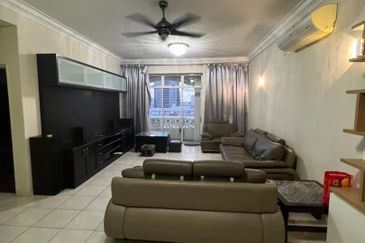
Pangsapuri Orchid View Luxury Apartment
Johor Bahru, Johor
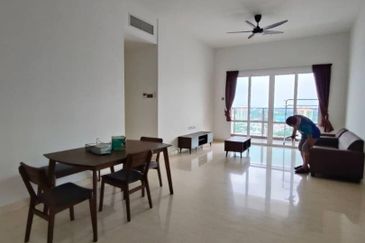
TriTower Residence @ Johor Bahru Sentral
Johor Bahru, Johor
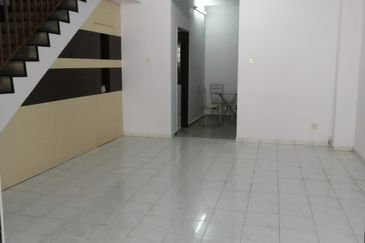
Taman Bukit Indah @ Iskandar Puteri
Johor Bahru, Johor
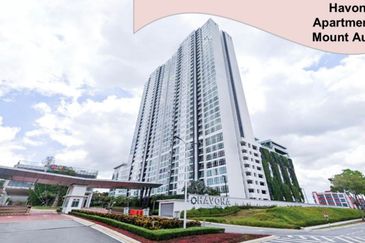
Havona Residence @ Taman Mount Austin
Johor Bahru, Johor

Havona Residence @ Taman Mount Austin
Johor Bahru, Johor

